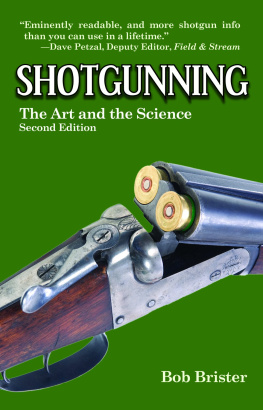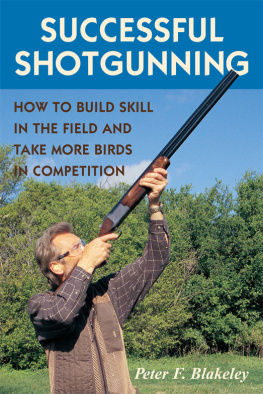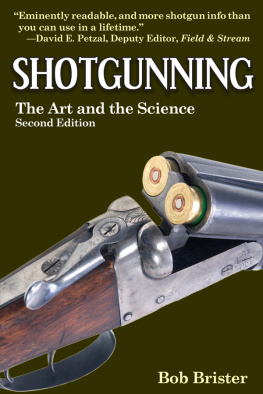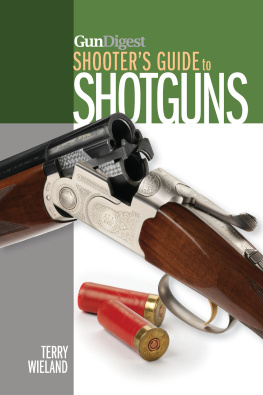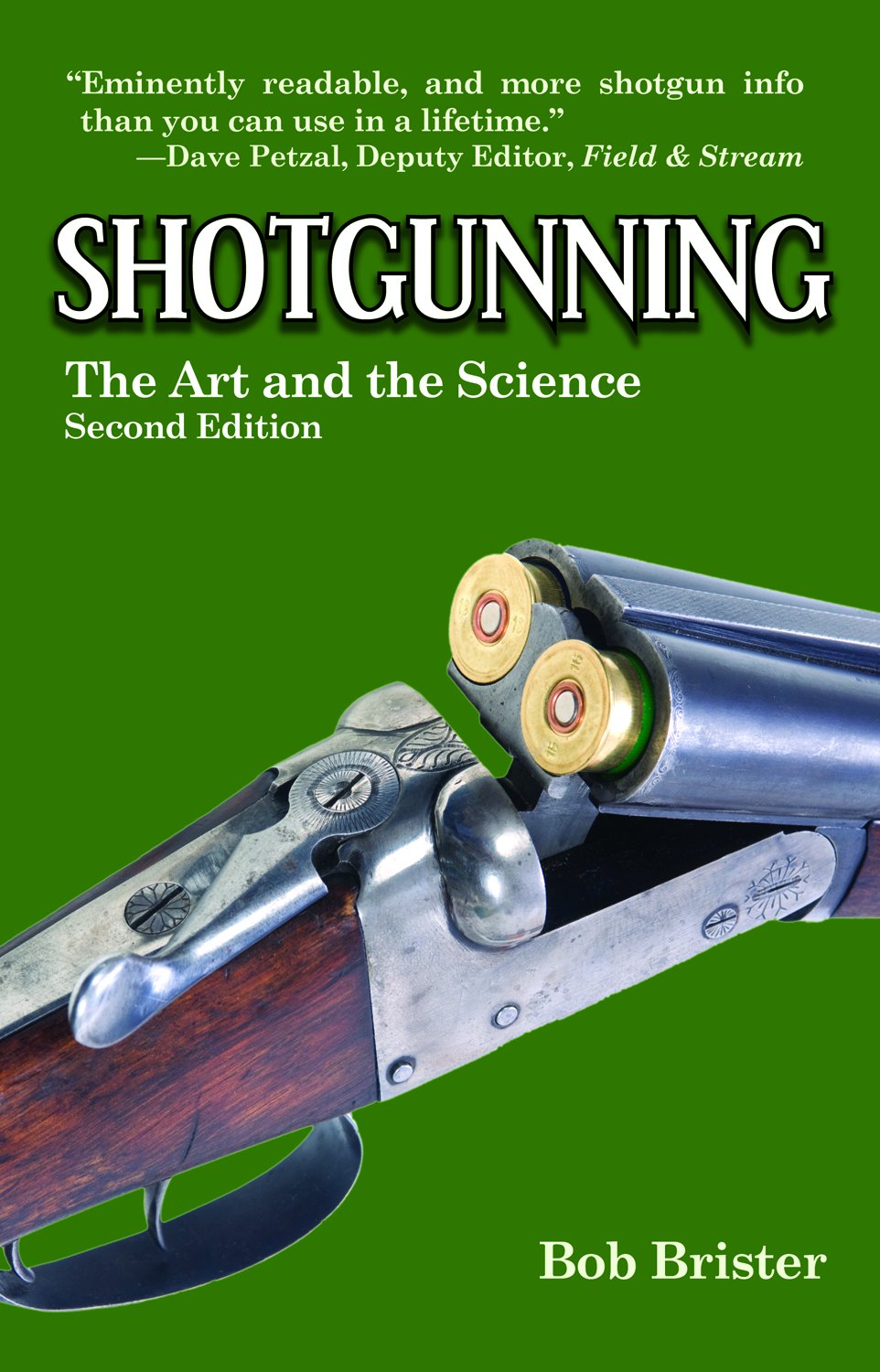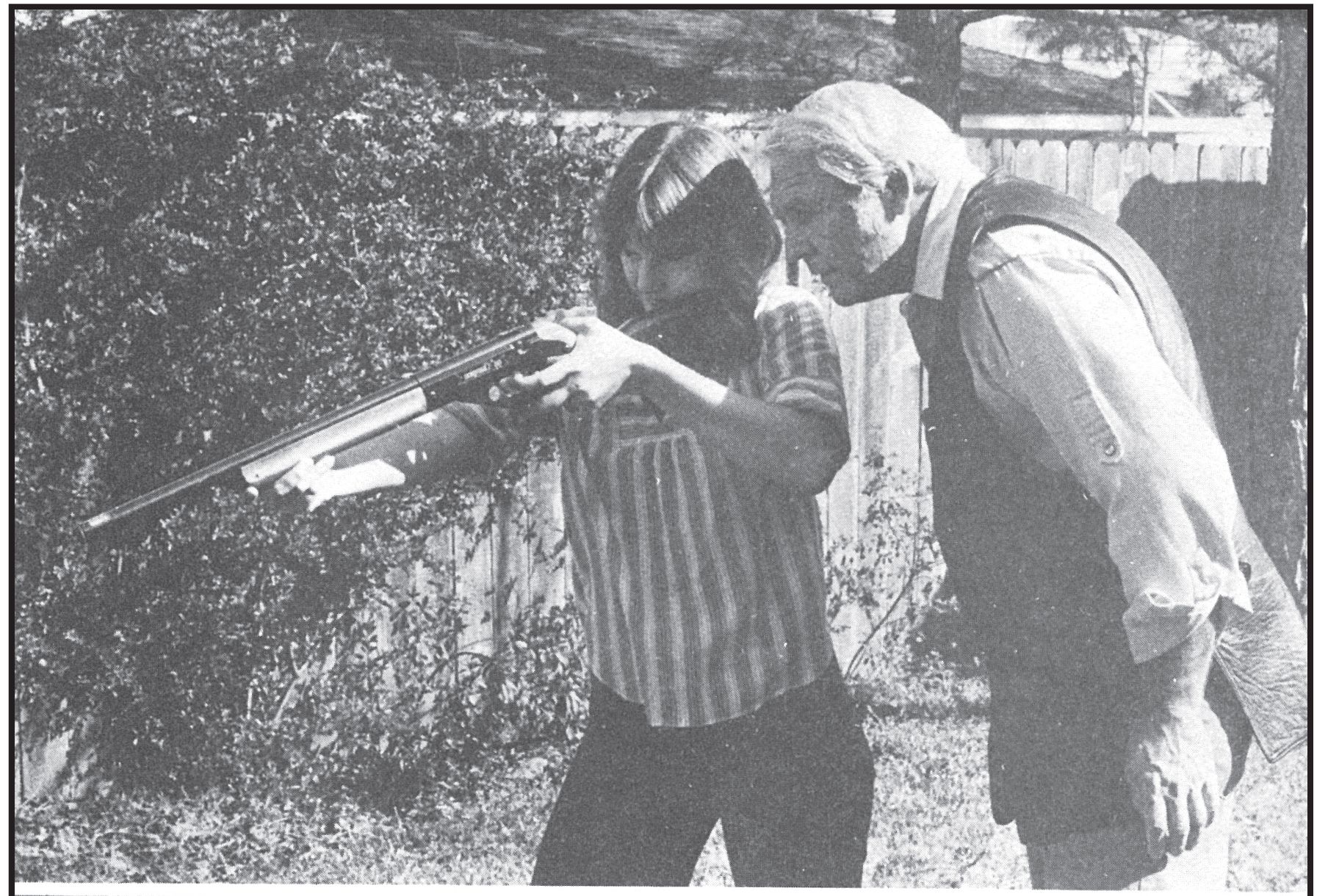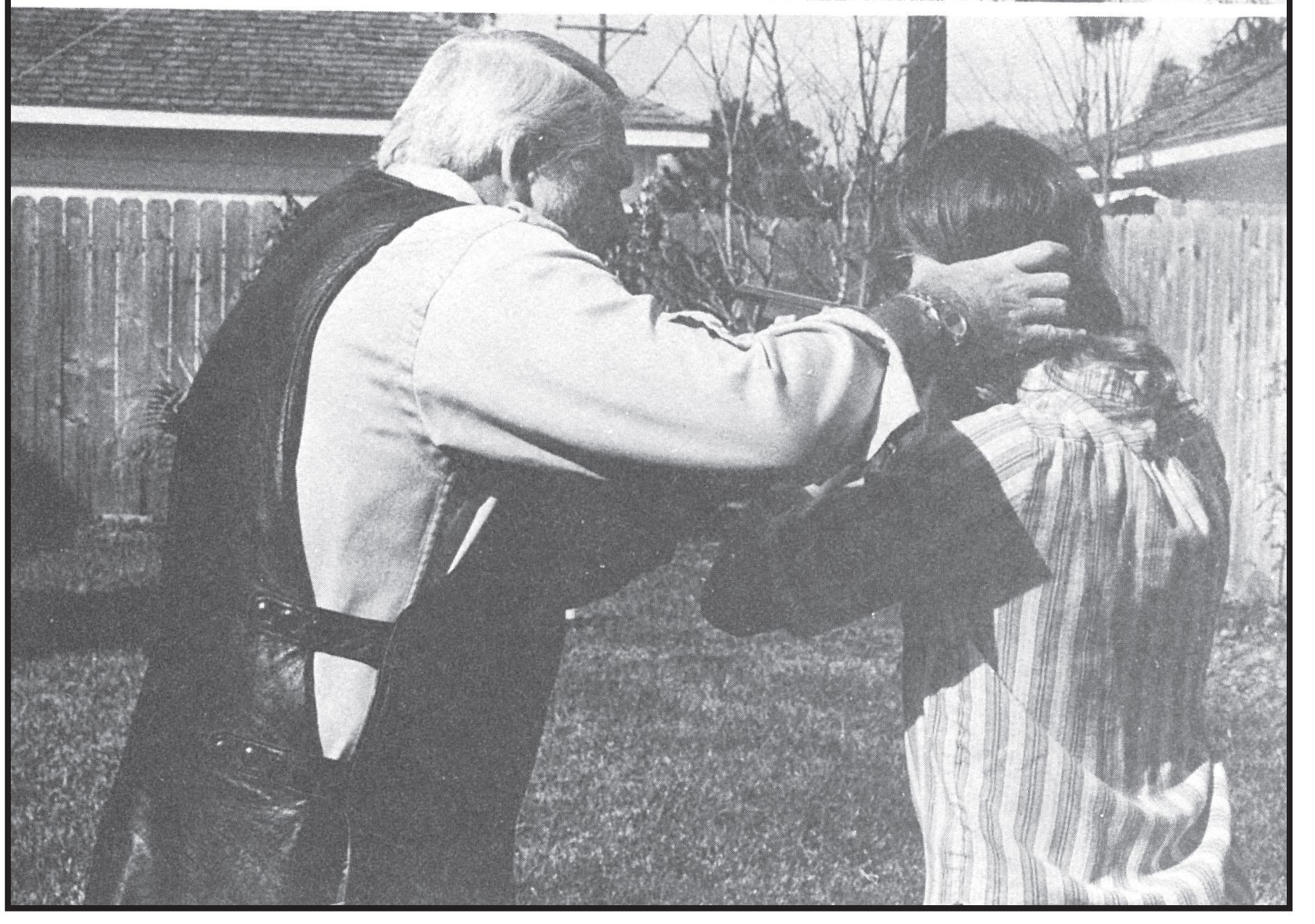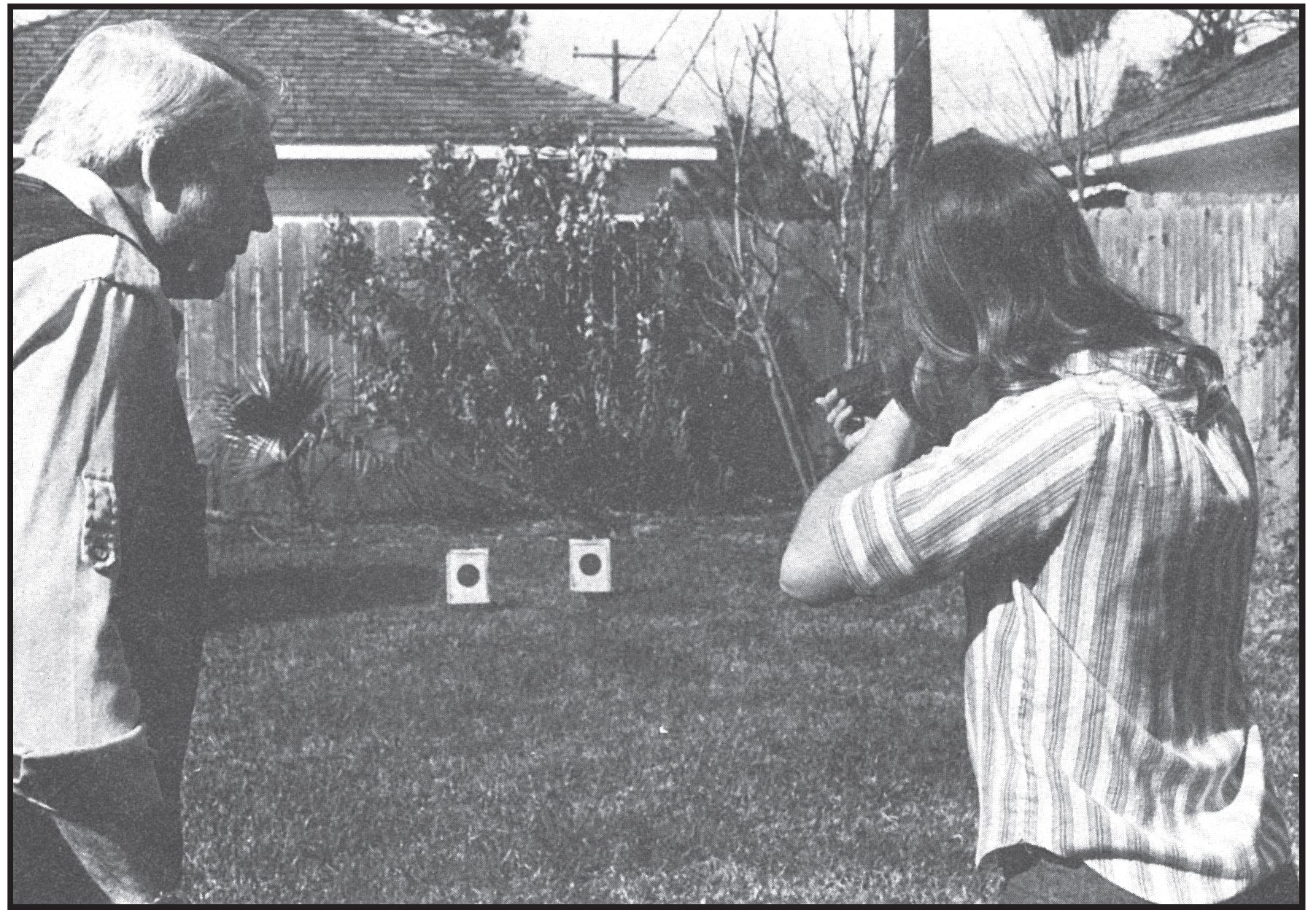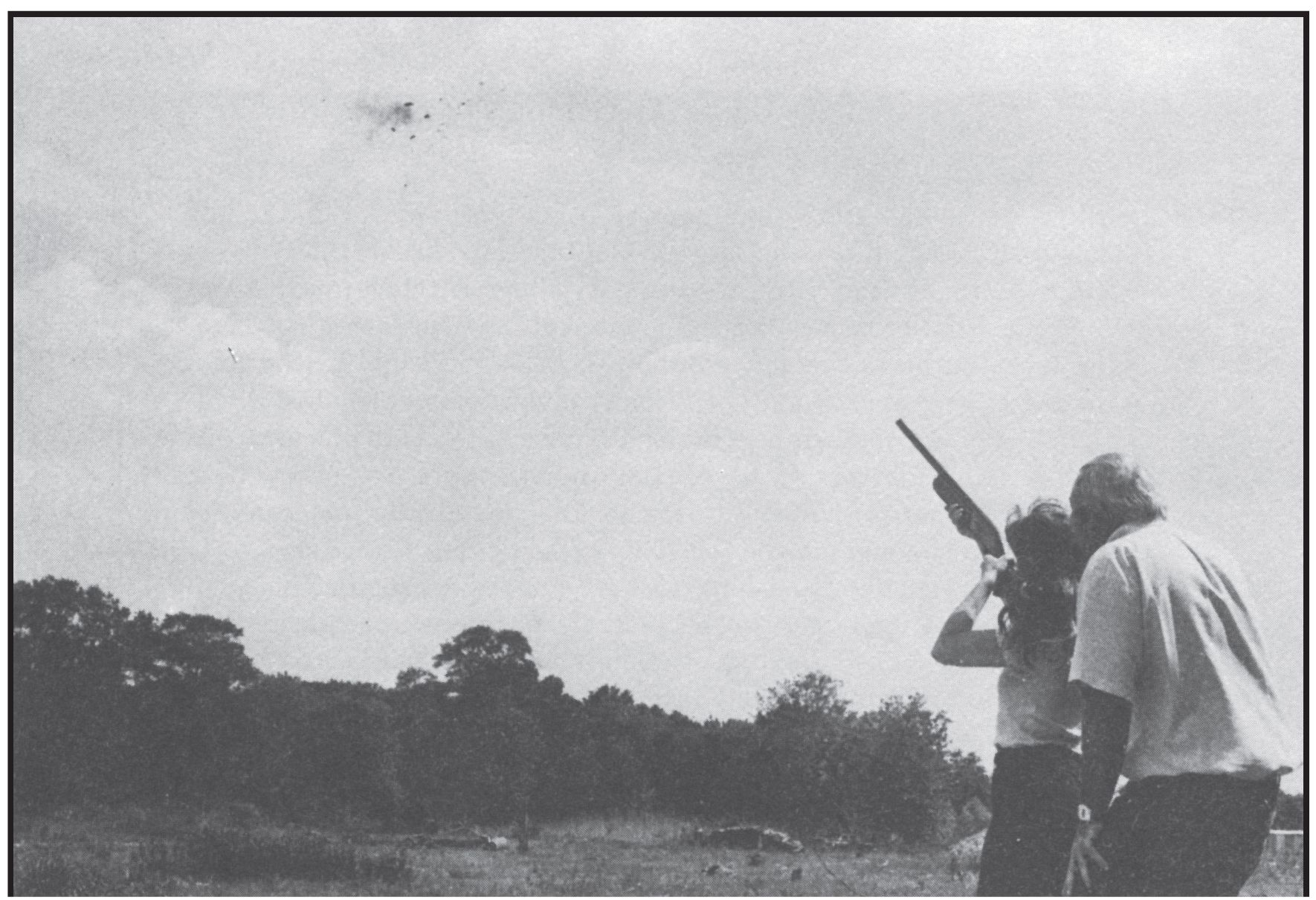LEARNING TO SHOOT
Susan Welton, a pretty teenager with brains, happened to be at our house one day when I needed pictures of somebody holding a shotgun. Although Susan had never handled a gun of any kind, she agreed to help out. Like most beginners, she wanted to crane her neck over the stock and bend backward rather than forward, but in five minutes she was holding the gun properly. Then it occurred to me. Here was the chance to answer the question Ive been asked so often all these years: How long does it take to learn to shoot a shotgun?
Id always figured learning to shoot a shotgun could be done, if done right, in about two weeks, maybe less. Not with the kind of proficiency that wins medals or money, but adequate technique for getting some game and being safe around other shooters. Susan agreed to give it a try.
I handed her my backyard practice gun, a Daisy Model 99 BB gun with its sights removed, and she started plinking at a Ping-Pong ball in the grass. Susan is a right-hander whose left eye is dominant (see Chapter 8) and so had to learn to shoot left-handed, to match that master eye. But after an hour or so, she had her left foot forward, her body bending nicely at the waist, and she was getting close to that Ping-Pong ball in the grass. I told her to practice 30 minutes in the morning and 30 minutes in the afternoon, to try and see where she was hitting, and to concentrate on the target rather than the gun.
Next day she was hitting the Ping-Pong ball.
We then put up a couple of little NRA targets, and I had Susan lower the gun and wait for the command to fire. Then Id tell her to hit the left target, the right one, or maybe the Ping-Pong ball. She didnt know which until the command came. What I wanted was to focus her mind entirely on the target, not the gun. That sort of practice eliminates the aiming or gun fixation that so many new shooters acquire without realizing it.
Susan wasnt hitting the paper targets or the Ping-Pong ball every time, but she was getting closer. I watched her mental computer start to take over, an inch at a time pulling the impact of the BBs nearer to the point of aim. Remember she had no sights; this was the sort of instinctive pointing the human body happens to be better adapted to than aiming.
You dont see a good quarterback line up behind the football and aim his passes; he throws them instinctively. So do dart players, spear chunkers, and pool sharks, the best of whom concentrate on the target rather than on their weapon. But shotgun shooters have a tough time learning that, and the best way around it is to eliminate right at the beginning the source of the fixationthe sight. Many shooters have probably read about and maybe tried the BB-gun technique to learn or improve their shotgun shooting, but very few bother with removing the sights. A rifle with sights teaches how to aim, and thats the last thing a new shotgun shooter needs.
Susan practiced her 60 minutes a day, but I got busy and couldnt really work with her. On the seventh day she appeared with a handful of paper targets, the bulls-eyes full of holes, and a half dozen riddled Ping-Pong balls.
I can shoot where I look, she said, and thats when you said we would go to the skeet range.
She was indeed handling the BB gun smoothly and naturally, and why not? In seven days, 30 minutes twice a day, she had probably put that gun to shoulder more frequently and pulled the trigger more often than the average hunter does in a couple of years.
The start of an experiment; the author attempts to teach a youngster whos never handled a gun to shoot a shotgun in one week. Here teenager Susan Welton, with a sightless BB gun, shoots at a Ping-Pong ball in the grass.
Because head position is the shotguns only rear sight, proper placement of cheek on stock is a crucial part of early shotgun teaching. Here the author adjusts his pupils head position, which was done each shot until she realized the advantage of having it there, otherwise new shooters often compensate and learn to shoot fairly well with poor head position, a problem that can be difficult to correct later.
We went to the skeet range and started out at shooting station number 7. The incoming (high house) target there is a relatively easy one, requiring very little forward allowance, yet it is indeed a moving target and the shooter can start to learn the value of lead and swing. For the first five targets Susan wasnt allowed even her BB gun; I just asked her to stand in shooting position, watch for the target, and point at it as if she had an imaginary gun in her hands. If her point was jerky, high, or low she could see it as well as I could and correct it.
Again the purpose was to force her to concentrate on the target rather than the gun, and in Susans case (shed never even seen a clay target before) to gain at least some idea of the angle and speed of the object shed be trying to hit.
Starting from low gun position, the student is told to shoot either left or right target, not knowing until the command which it will be. This teaches smooth gun mounting and helps eliminate aiming or gun fixation by focusing shooters attention on target. Shot by shot, the students mental computer begins to narrow the error of shot placement, instinctively and naturally.
After a week of practicing 30 minutes twice daily, Susan breaks her second skeet target with dead-center hit.
Then she was handed her first real gun, empty, and she got more dry-run targets. Each time she was asked to swing on the target, point right at it, then pass it and see a little daylight ahead of it as she pulled the trigger.
I was watching over her shoulder, and it was interesting to see that built-in computer start to function with the actual gun. She had been accustomed to a lightweight BB gun with a heavy trigger pull, but this was a Remington 1100 20-gauge lightweight, weighing considerably more and with a much lighter trigger pull.
The first time the target came by, Susan poked at it and snapped the trigger. She may have shut her eyes for all I know, figuring Id sneaked a shell into that gun. But after that she gradually smoothed out and the big moment had come. I checked her ear plugs, told her that the noise of the gun would seem strange that first time, as if maybe the gun had exploded or something, because a shot sounds differently when it happens right there in your face, but not to worry.
I broke a couple of targets for her, letting her hear the gun shoot, see it function, and see how little it kicked me. Then I handed it to her, told her to call pull loud and clear, and the target came sailing for us. I wish I could say she hit that first one, but she didnt. She shot in front of it. Id made the mistake of telling her too much about shooting in front of things and shed momentarily overridden her computer, trying to make the gun shoot out in front. So I told her to point at the target, and only at the last second move a little in front of it.

